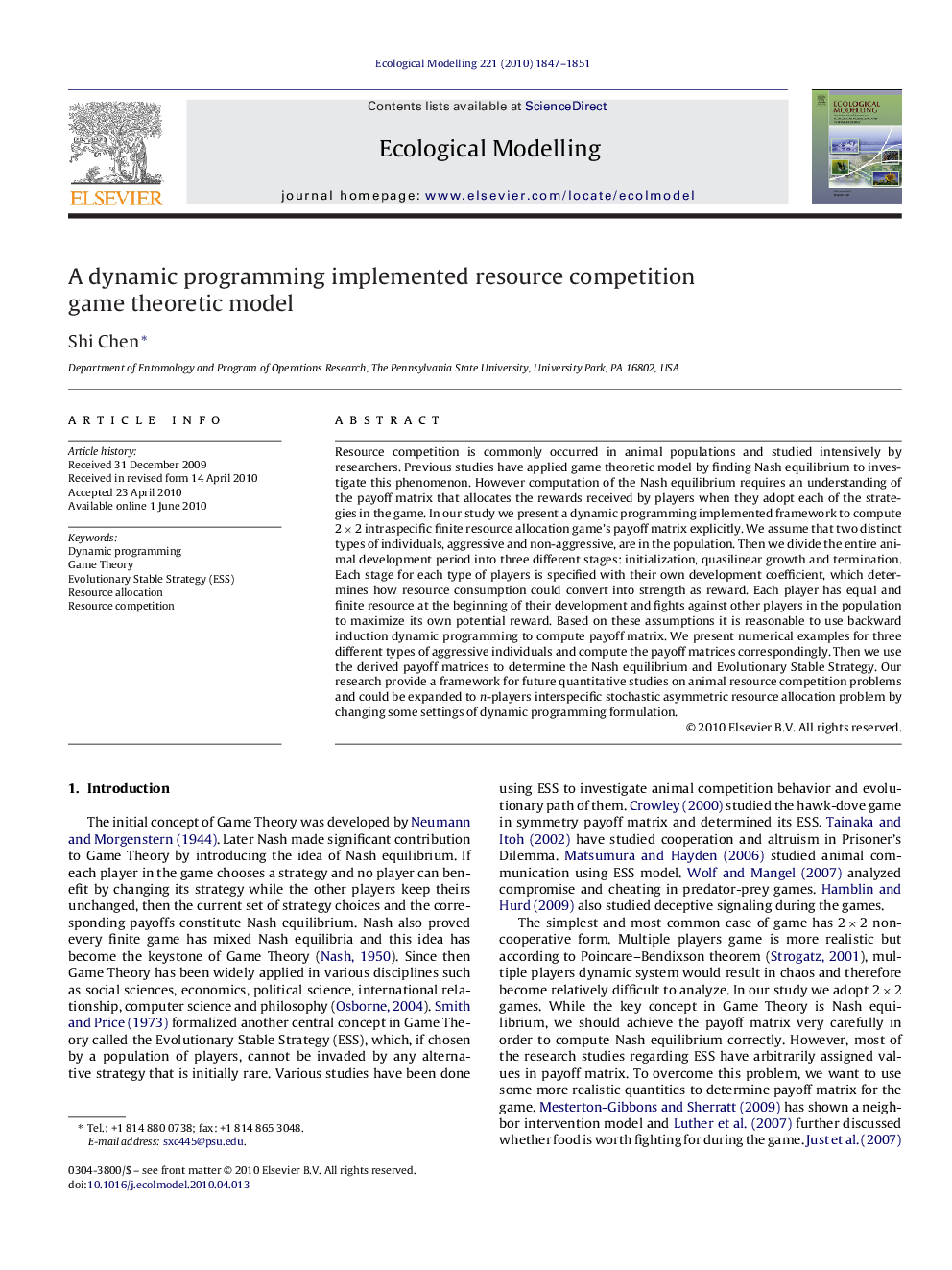| Article ID | Journal | Published Year | Pages | File Type |
|---|---|---|---|---|
| 4377286 | Ecological Modelling | 2010 | 5 Pages |
Resource competition is commonly occurred in animal populations and studied intensively by researchers. Previous studies have applied game theoretic model by finding Nash equilibrium to investigate this phenomenon. However computation of the Nash equilibrium requires an understanding of the payoff matrix that allocates the rewards received by players when they adopt each of the strategies in the game. In our study we present a dynamic programming implemented framework to compute 2 × 2 intraspecific finite resource allocation game's payoff matrix explicitly. We assume that two distinct types of individuals, aggressive and non-aggressive, are in the population. Then we divide the entire animal development period into three different stages: initialization, quasilinear growth and termination. Each stage for each type of players is specified with their own development coefficient, which determines how resource consumption could convert into strength as reward. Each player has equal and finite resource at the beginning of their development and fights against other players in the population to maximize its own potential reward. Based on these assumptions it is reasonable to use backward induction dynamic programming to compute payoff matrix. We present numerical examples for three different types of aggressive individuals and compute the payoff matrices correspondingly. Then we use the derived payoff matrices to determine the Nash equilibrium and Evolutionary Stable Strategy. Our research provide a framework for future quantitative studies on animal resource competition problems and could be expanded to n-players interspecific stochastic asymmetric resource allocation problem by changing some settings of dynamic programming formulation.
